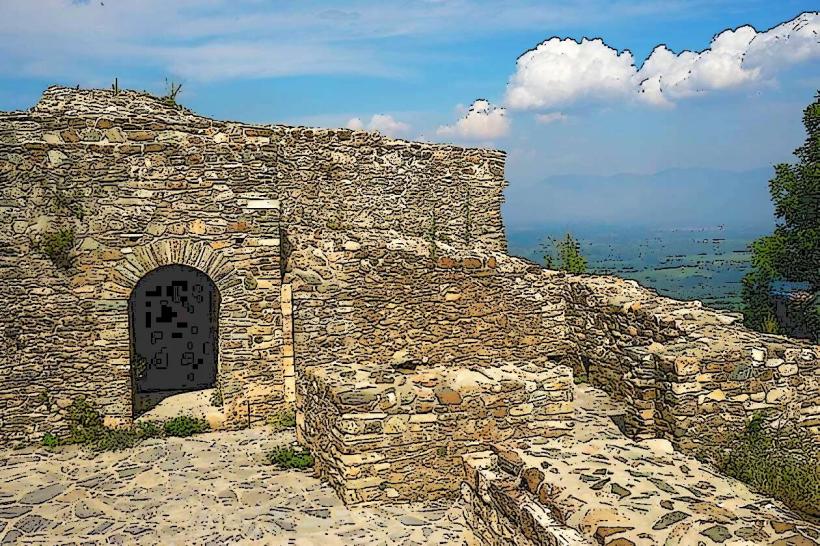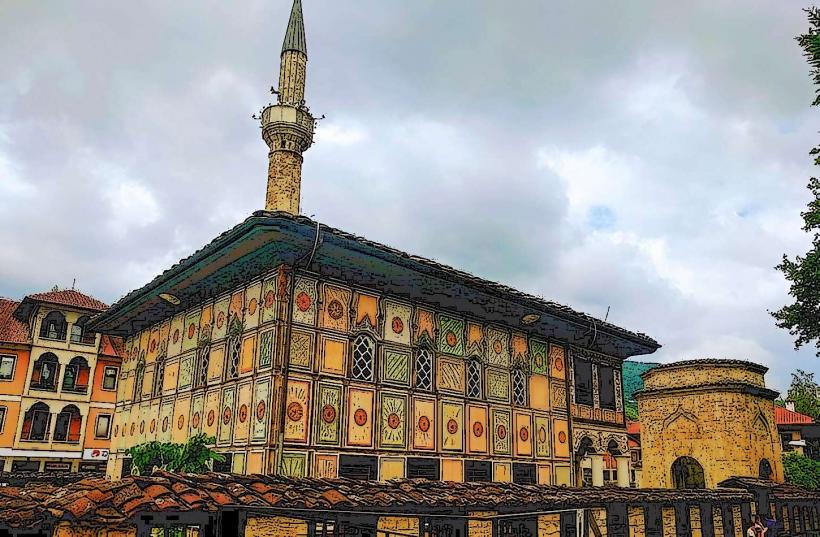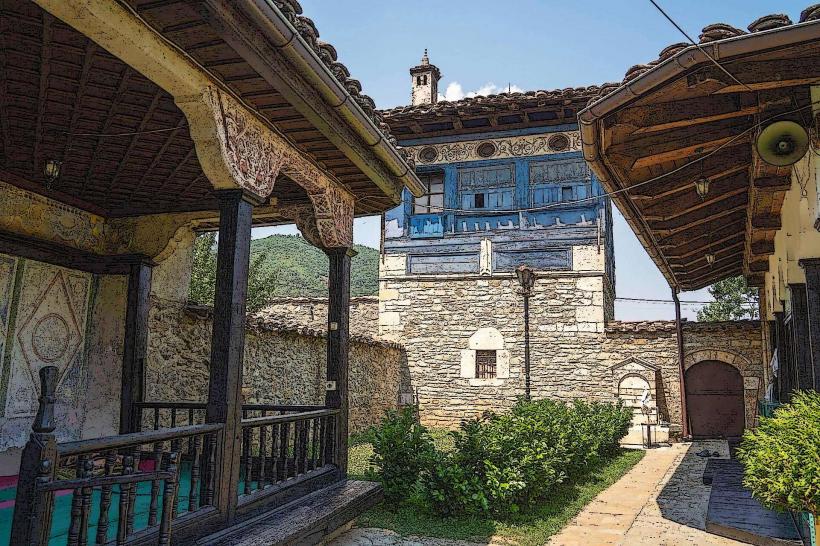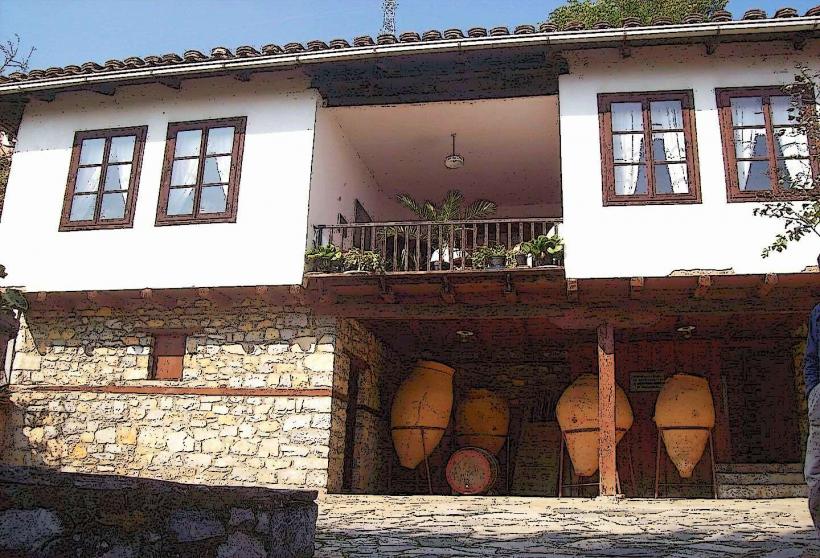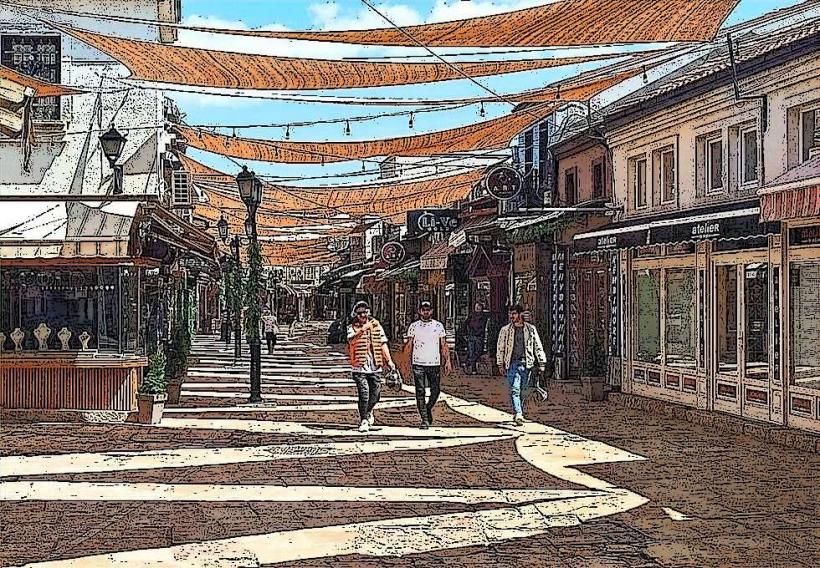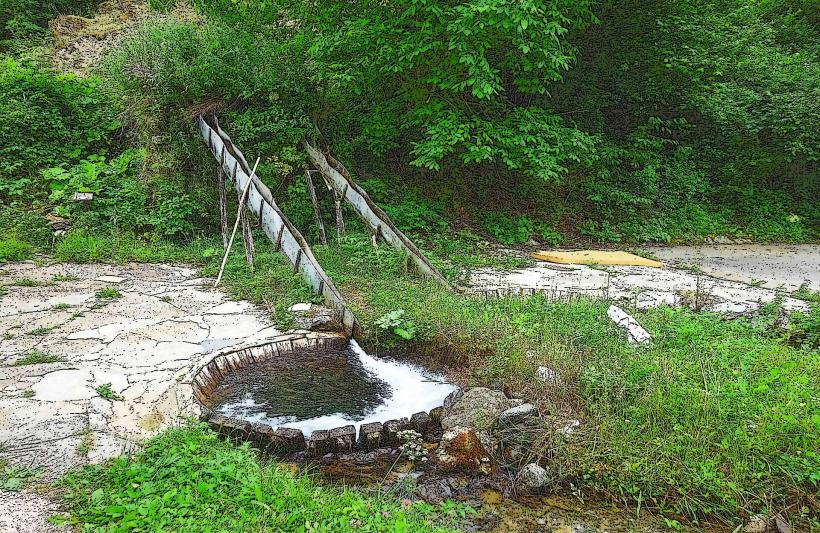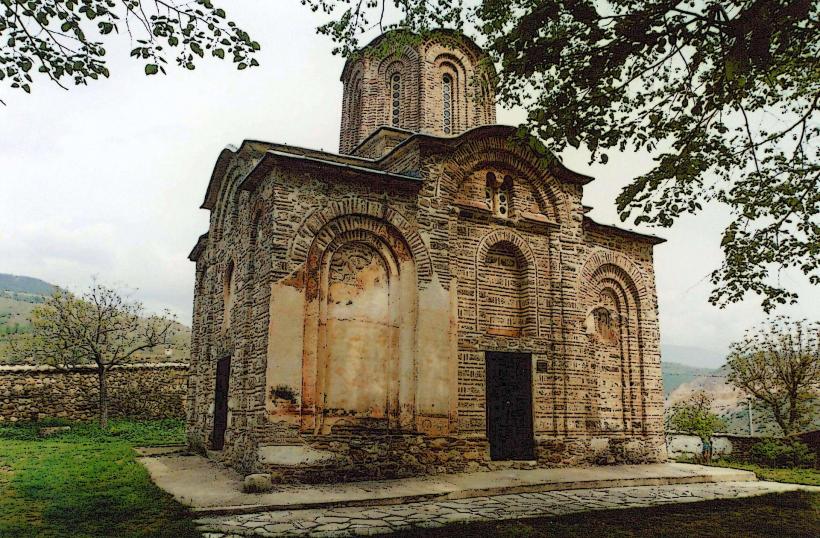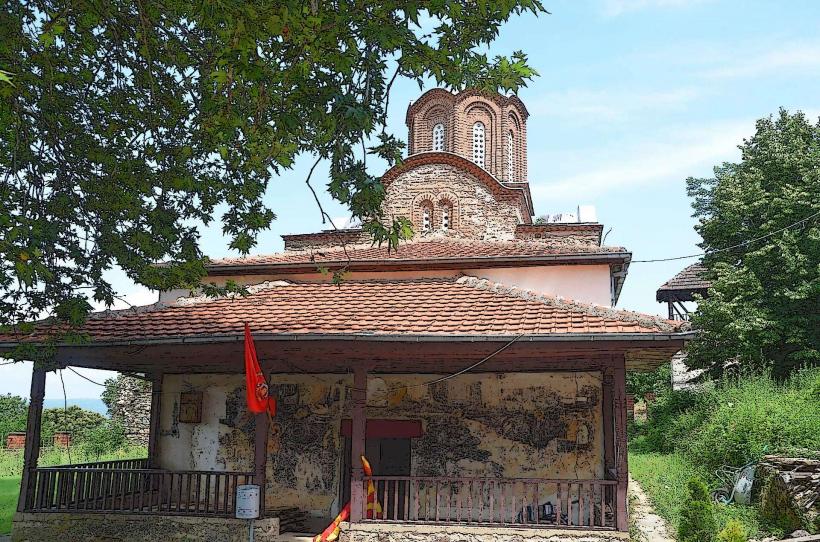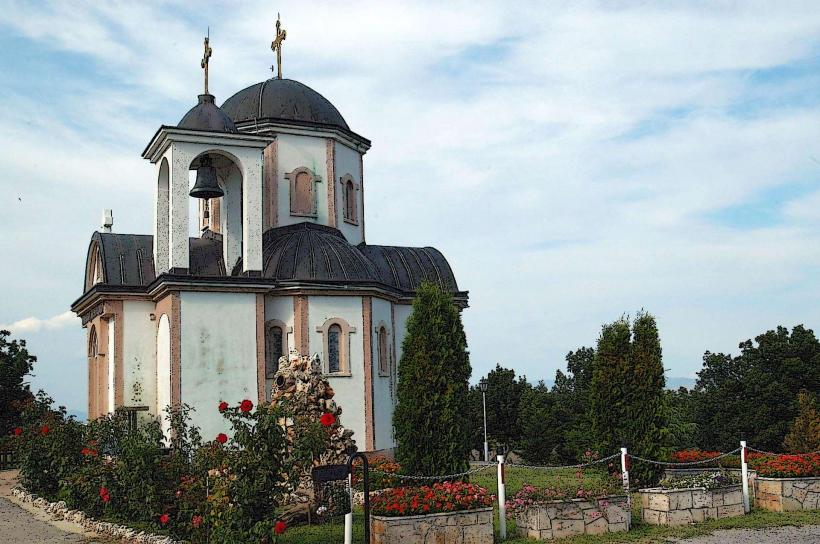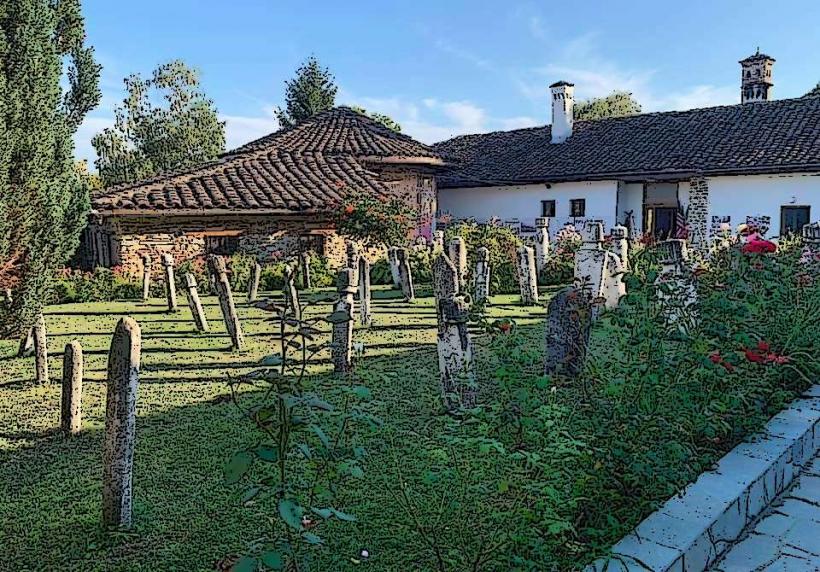Information
Landmark: Monastery of St. AthanasiusCity: Tetovo
Country: North Macedonia
Continent: Europe
The Monastery of St. Athanasius (Macedonian: Манастир Свети Атанасиј) is a significant Eastern Orthodox religious site located near Tetovo, in the northwestern part of North Macedonia. It is a relatively lesser-known but historically important monastery, with a rich connection to the medieval and Ottoman periods.
Overview of the Monastery of St. Athanasius
- Location: The monastery is situated about 15 kilometers (9 miles) from Tetovo, in a peaceful rural area, surrounded by nature and a stunning mountainous landscape. It is located near the village of Jelovjane, on the southwestern side of the mountain range.
- Name: The monastery is dedicated to Saint Athanasius, a notable early Christian bishop, theologian, and church leader. Saint Athanasius was known for his opposition to Arianism and his efforts to define the doctrine of the Trinity.
Historical Significance
Foundation and Early History:
- The exact date of foundation of the Monastery of St. Athanasius is not precisely known, but it is believed to have been founded during the medieval period, possibly around the 14th century, a time when monasticism flourished in the Balkans.
- The monastery has long been an important spiritual and cultural center, especially during the Byzantine and Ottoman eras. It was a place of worship, learning, and cultural preservation, playing a significant role in the Christian tradition of the region.
Ottoman Period:
- During the Ottoman rule, many Orthodox monasteries in the region experienced decline due to the religious policies of the Ottomans, yet some managed to survive and retain their importance. The Monastery of St. Athanasius is one of the few examples of monasteries that preserved their religious significance in this period.
- Throughout Ottoman rule, it maintained a role in preserving Orthodox Christianity in the region, even though many Christian communities were facing significant challenges under Ottoman domination.
Modern Period:
- In the modern era, the monastery was renovated and restored, especially after North Macedonia's independence in the 1990s. It has become a popular destination for pilgrims and tourists seeking to experience the spiritual atmosphere and historical significance of the region.
- The monastery is also an important symbol of the Eastern Orthodox faith and has been actively involved in religious events, church services, and festivals in the region.
Architecture and Features
Church of St. Athanasius:
- The central church of the monastery, dedicated to St. Athanasius, is a classic example of Byzantine architectural style, with features common to Orthodox Christian monasteries. It has a simple, yet elegant design, with a prominent dome and arches typical of the era.
- Inside the church, visitors will find iconography, frescoes, and religious artwork depicting scenes from the life of St. Athanasius and other important Orthodox Christian figures. The icons are painted in traditional Byzantine style, with vivid colors and intricate details.
Monastic Complex:
- The monastery includes several buildings, including monastic cells, a refectory (dining hall), and a bell tower. The complex is set within a walled area, creating a tranquil space for prayer and contemplation.
- The buildings are made primarily of stone, maintaining a rustic and traditional appearance that blends with the natural surroundings.
- The courtyard of the monastery is serene, offering a peaceful environment for visitors to reflect and meditate.
Natural Setting:
- The Monastery of St. Athanasius is located in a picturesque setting, with views of the surrounding mountains, forests, and streams. The natural beauty of the area adds to the peaceful and contemplative atmosphere, making it a favorite retreat for pilgrims and nature lovers alike.
Religious and Cultural Importance
Spiritual Role:
- The monastery remains an important center for Eastern Orthodox Christianity in the region. It is a site of regular church services, liturgy, and religious events, where pilgrims gather to seek spiritual renewal and connection to the faith.
- The monastery is often visited during significant religious holidays, particularly those related to St. Athanasius, whose feast day is celebrated by Orthodox Christians on January 18.
Cultural Heritage:
- The Monastery of St. Athanasius is not just a place of worship but also a cultural landmark. It houses important religious artifacts, including icons, manuscripts, and liturgical items that are valuable to the Orthodox Christian tradition and the history of the region.
- The monastery’s library and collection of church documents are significant for the study of the religious and cultural history of the region.
Pilgrimage and Tourism:
- The monastery is a popular destination for pilgrims who come to honor St. Athanasius and to experience the peaceful and spiritual environment. It also attracts tourists interested in exploring the rich Christian heritage of North Macedonia and its monastic history.
- The serene and picturesque environment surrounding the monastery also makes it a sought-after location for those seeking a retreat from the bustle of everyday life.
Visitor Experience
- Pilgrimage Site:
- Pilgrims visiting the monastery often engage in prayer and reflection in the church and the monastery's peaceful grounds. Many come to seek spiritual guidance, while others come to honor St. Athanasius and partake in religious services held at the monastery.
- Tourism:
- For tourists, the monastery offers a unique opportunity to explore an authentic Orthodox monastery in a serene natural setting. Visitors can enjoy the beautiful architecture, the historic icons, and the quiet atmosphere that invites reflection.
- The monastery is also a place where visitors can connect with the local culture and learn about the role of Eastern Orthodoxy in the history of the region.
Conclusion
The Monastery of St. Athanasius is a significant spiritual, historical, and cultural landmark near Tetovo, North Macedonia. Its historical roots in the medieval period and its preservation through the Ottoman era reflect its resilience and importance to the local community. The monastery is an active religious site and a beautiful example of Byzantine-style architecture, with frescoes, icons, and religious traditions that continue to draw visitors for both spiritual and cultural reasons. Set in a tranquil, mountainous environment, the monastery provides a peaceful escape and an opportunity to reflect on the long-standing religious heritage of the region.

